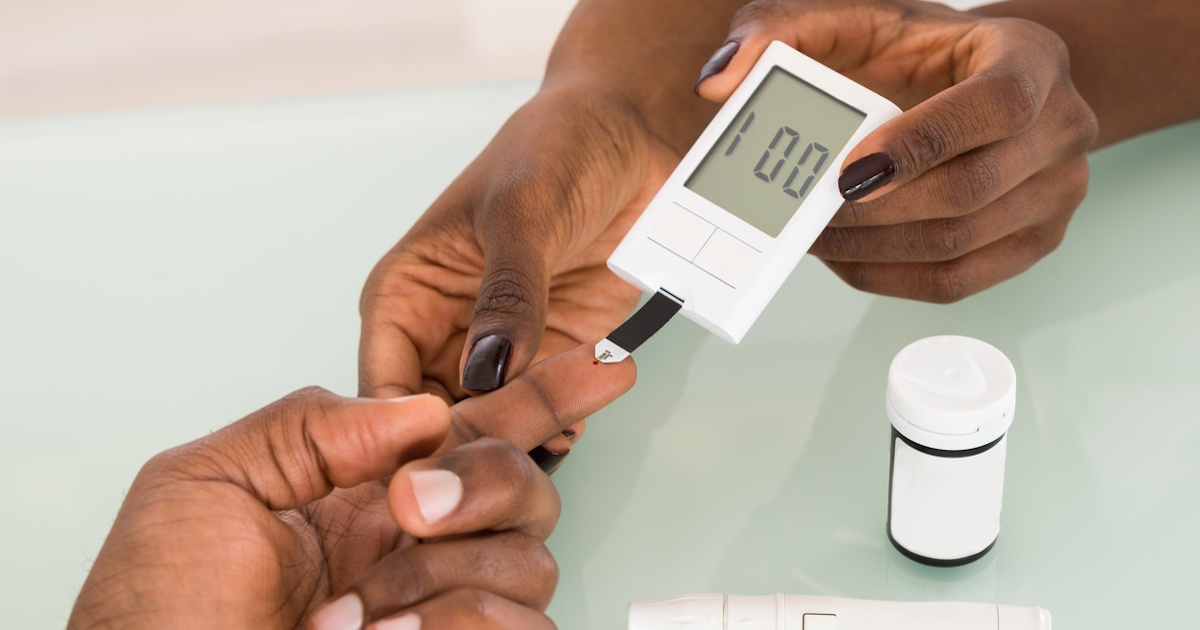How To Treat And Prevent Hyperglycemic Hyperosmolar Syndrome
Hyperglycemic hyperosmolar syndrome, also known as hyperosmolar hyperglycemic nonketotic syndrome, nonketotic hyperosmolar syndrome, and diabetic hyperosmolar syndrome, is a severe complication of diabetes. The condition most often affects type 2 diabetes patients and typically develops after an illness or infection. Older patients are particularly at risk, and the condition is characterized by extremely elevated levels of blood glucose. Patients may also experience severe dehydration, vision loss, fever, dry mouth, confusion, and drowsiness. Some patients may lose consciousness, have seizures or hallucinations, or fall into a diabetic coma. If left untreated, hyperglycemic hyperosmolar syndrome can be fatal. The syndrome usually develops slowly over several weeks. A diagnosis can be confirmed with blood tests, and these must show a blood glucose reading of at least six hundred mg/dL. The methods outlined below can help in the treatment and prevention of hyperglycemic hyperosmolar syndrome.
Intravenous Fluids

Intravenous fluids are given to patients with hyperglycemic hyperosmolar syndrome in the emergency room. These fluids are the first line of treatment, and they are given to help decrease blood sugar levels, increase urine output, and correct dehydration. Along with fluids, insulin may be given to help reduce glucose levels. The fluids most often used are balanced crystalloid solutions and normal saline. Normal saline is also known as isotonic saline and sodium 0.9 percent. Normal saline contains sodium and chloride and can improve electrolyte balance while also replacing lost fluids. Depending on the severity of the hyperglycemic hyperosmolar syndrome, patients may need to receive intravenous fluids for several hours or days at the hospital. The fluids can sometimes be given with a single intravenous line, but a second intravenous line may be needed in severe cases.
Keep reading to reveal more hyperglycemic hyperosmolar syndrome treatments.
Sodium And Potassium Replacement

In addition to intravenous (IV) fluids, sodium and potassium replacement are typically given at the same time. Sodium is normally replaced through the use of standard IV fluids. Patients with hyperglycemic hyperosmolar syndrome generally have very low potassium as well, and it must be carefully replaced. Potassium replacement usually begins after the patient can produce an adequate level of urine output, and most patients are started on potassium replacement at a rate of ten milliequivalents (mEq). The replacement process may take several hours, and patients will be monitored regularly during this time. Nurses will check the patient's blood pressure, blood oxygen levels, urine output, blood glucose readings, and heart rate. Nurses will also ask the patient to report if they develop any chest pain, dizziness, vision changes, thirst, or fatigue.
Get to know more ways to treat hyperglycemic hyperosmolar syndrome now.
Check Blood Sugar Regularly

Patients should check blood sugar regularly to prevent hyperosmolar hyperglycemic syndrome and its complications. Doing so can enable patients to act quickly if readings become too low or too high and can halt the progression of hyperosmolar hyperglycemic syndrome, which usually takes several days or weeks to develop. Patients will need to use a lancet device, blood glucose meter, and testing strips to check their glucose. After loading a fresh lancet into the device, patients prick their finger or forearm to obtain a small drop of blood. The blood is then placed on a testing strip and inserted into the meter to produce a reading. Patients may need to test their glucose levels before and after meals. Doctors can advise patients on appropriate testing schedules for their individual needs. Generally, individuals with advanced symptoms of diabetes who take multiple medications will need to test as often as ten times per day. Individuals who manage their diabetes without the need for insulin may be able to test once a day or less frequently. Some patients may be able to use a special device that takes glucose readings continuously and doesn't require fingersticks. All patients should keep a log of their glucose readings, and there are many online apps to help with this.
Learn more about how to effectively treat hyperosmolar hyperglycemic syndrome now.
Get Regular Exercise

Exercise helps improve the body's response to insulin and can allow patients to take less insulin and fewer medications overall. Doctors recommend doing at least 150 minutes of moderate to vigorous activity a week. Aerobics, swimming, brisk walking, yoga, and cycling can all count towards this goal. Home activities like raking leaves and vacuuming count as well. Patients may wish to invest in a fitness tracker or join an activity club or gym to motivate themselves to exercise more. Patients should always have a physical exam from their doctor before they begin any exercise regimen. The doctor can assess the patient's heart, lungs, and range of motion to recommend exercises that are safe and effective for the patient's needs. Diabetes patients should always be particularly careful after exercise, allow themselves a few minutes to rest before continuing with their next task, and bring along a small snack to eat immediately following their workouts.
Uncover another method of treating hyperosmolar hyperglycemic syndrome now.
Manage A Healthy Diet

Lifestyle factors such as diet are particularly important in the management of diabetes, especially as healthy dietary choices can reduce the risk of hyperosmolar hyperglycemic syndrome. Doctors recommend patients consume low levels of saturated fat and increase their intake of fruits, vegetables, and whole grains. They should also try to include more whole and plant-based foods in their diets and limit or eliminate fast food and processed food. In particular, red meats and fried foods should be limited. Low-sugar fruits such as kiwis and blueberries are healthy choices for diabetes patients, and sweet potatoes are a better choice than white potatoes. Depending on the severity of diabetes, doctors may recommend some patients restrict their caloric intake, and many patients will need to monitor their carbohydrate intake as well. The Mediterranean and DASH diets are often recommended for diabetes patients, and some find a vegetarian or vegan diet helps them manage their glucose levels and symptoms more easily. It can be difficult for diabetes patients to consistently make healthy dietary choices, and thus they should consider consulting a nutritionist for the most updated advice and support.
